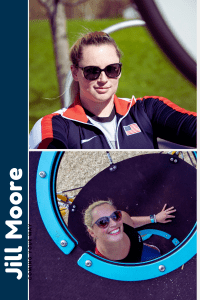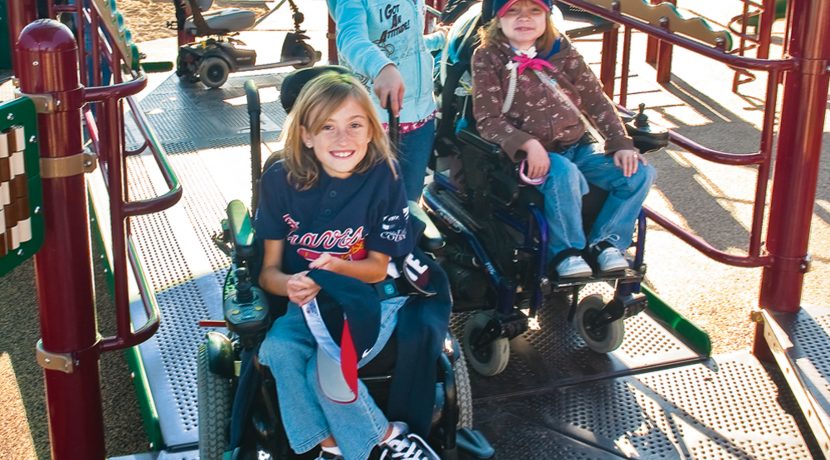Going Beyond ADA Compliance to Inclusivity
 In July, Jill Moore, an Inclusive Play Specialist from Landscape Structures® spoke at the American Society of Landscape Architects Conference on the subject of inclusive play design. Moore, a former Paralympian athlete, is deeply passionate about her mission: To make sure every child on every playground gets to have fun. Moore has a deep understanding of the need for variety of options and thoughtful designs to give all children an opportunity to play.
In July, Jill Moore, an Inclusive Play Specialist from Landscape Structures® spoke at the American Society of Landscape Architects Conference on the subject of inclusive play design. Moore, a former Paralympian athlete, is deeply passionate about her mission: To make sure every child on every playground gets to have fun. Moore has a deep understanding of the need for variety of options and thoughtful designs to give all children an opportunity to play.
In a recent study, 57 percent of parents mistakenly believed that playgrounds are required by the Americans with Disabilities Act (ADA) to include elements designed for children with Down syndrome, sensory disorders, and visual and hearing impairments. Current ADA standards primarily require that playgrounds be accessible for those who use a wheelchair or other mobility aid. “ADA doesn’t really mean a playground is inclusive”, Moore said, “The Americans with Disabilities Act is a set of laws created in 1990 to make communities more livable and provide equal rights for those with disabilities.” She continued, “ADA compliance regulations are just a bare minimum set of compliance laws. Most playgrounds have been ADA compliant since 2010.”
As an example, Moore explained how “engineered wood fiber is considered ADA compliant,” however, it is the one of the worst obstacles for those in a wheelchair to have to push through to get to the playground equipment. “The loose-fill material causes challenges in traversing a space because front wheels get stuck,” she explains. Moore further explained that wood fiber can be a challenge for kids with ambulatory impairments (struggle with balance), “It’s harder to maintain stable footing, it’s just outright tough to move through at the base level. Users can’t even maintain a basic conversation when trying to maneuver wood fiber and stay with their peers.” To be truly inclusive, surfacing like PIP (Poured in Place) or turf is better and more inclusive.
In addition, inclusive play design needs to enable all children to develop physically, socially, and emotionally. An inclusive playground provides just the right level of challenge, addresses all levels of ability, and goes beyond minimum accessibility to create play experiences that meet a variety of needs and interests. For example, Moore stated, “a steering wheel on a post which adds a ground level accessible component checks the box for ADA standards, but how fun is that in reality?” It’s a minimal standard with a focus on physical access, not necessarily the play experience. Does it facilitate togetherness and social development? Is it any fun? At an inclusive playground, children of all abilities can interact with each other and do what all kids want to do: play.
The challenge for playground designers, municipalities, or landscape architects is to provide an exciting experience for all end users. Moore says that “ADA is only the minimum standard. We should be aiming to go beyond those basic ADA standards and redefine the status quo.” Creating an inclusive play space in your community will deliver numerous benefits. Playgrounds that truly welcome everyone will become destination gathering places for visitors near and far. Most importantly, inclusive playgrounds help eliminate bias for children with disabilities.
Fun Fact: The founder of Landscape Structures®, Steve King was on the board that wrote the ADA laws for playgrounds. His work with the ADA set the precedent which resonates through the company today.

